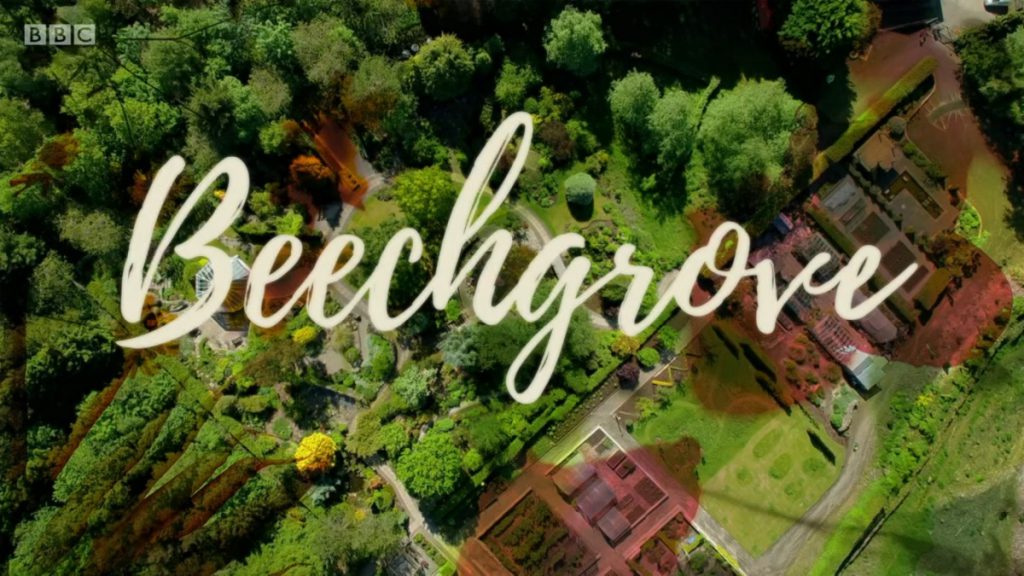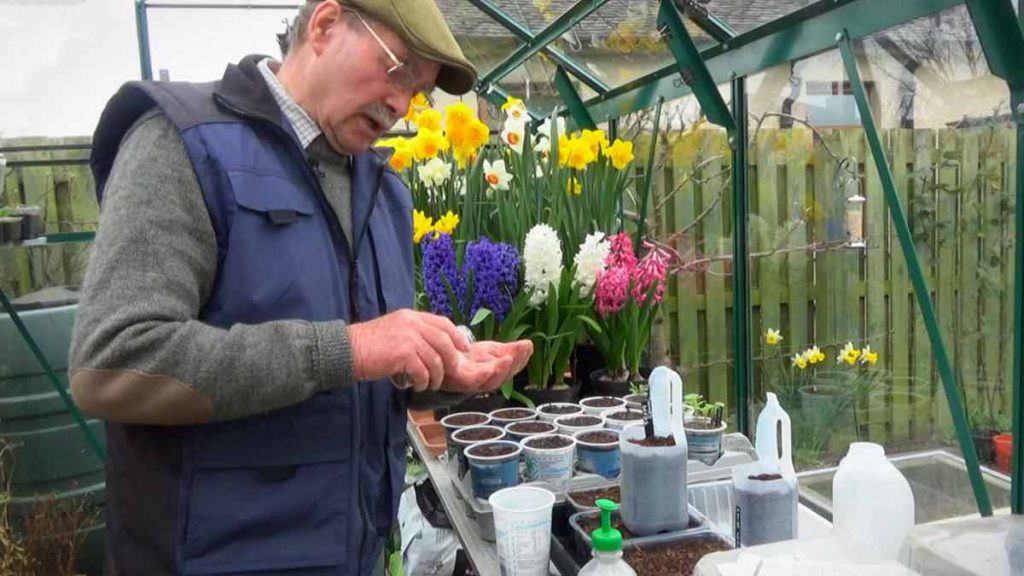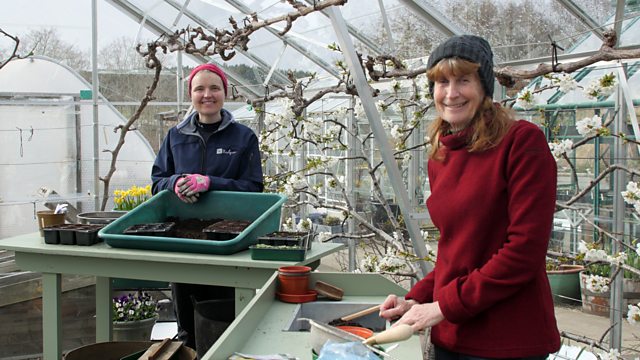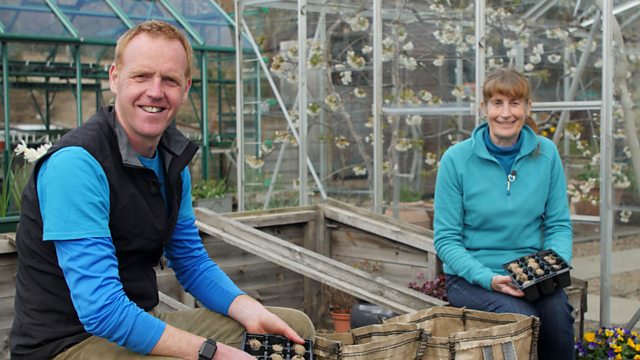The Beechgrove Garden 2021 episode 21: Carole and Mairi are particularly delighted to welcome gardener and cook Dina Watt to Beechgrove this week, as Dina has promised to cook for Carole and Mairi using Beechgrove’s own produce but adding Dina’s special Indonesian twist.
Nestling in the south western tip of Scotland on the Rhins of Galloway is Scotland’s most exotic garden. Kirsty visits Logan Botanic Garden to see how this unique garden manages to be both exotic and yet very Scottish.
We also visit the Maxwell Centre, based in the Coldside area of Dundee. This now ten-year-old community garden was once a derelict lot and is now a space to socialise, cook, learn and grow food, situated at the heart of the growing community.
The Beechgrove Garden 2021 episode 21
Logan Botanic Garden
Logan Botanic Garden is a botanical garden located near Port Logan on the Rhins of Galloway, at the south-western tip of Scotland. The garden, like Dawyck in the Scottish Borders and Benmore in Argyll and Bute, is an outpost or Regional Garden of the Royal Botanic Garden Edinburgh.
The area has a mild climate due to the influence of the North Atlantic drift. The combination of this and the sheltered aspect of the gardens enables plants to be cultivated which would not normally survive outdoors in Scotland, with species from as far away as Chile, Vietnam and New Zealand all thriving in Logan’s borders. Features of Logan include a sizable Walled Garden complete with formal fish pond, the newly built eco-Conservatory housing a variety of South African plants, Tasmanian Creek area, and Discovery Centre which houses various exhibitions throughout the seasons.
The garden is also home to Plant Heritage’s National Plant Collections of Gunnera, Griselinia and Leptospermum.
How to grow runner beans
Quintessentially British, runner beans are a delicious veg plot staple. These climbing plants are easy to grow and produce a large crop in a small area. The pretty red or white flowers are followed by an abundance of long green pods over several months. Pick when young, for tasty stringless beans
Runner beans are tender plants that won’t survive frost, so for an early crop sow indoors in late spring. You can also sow outdoors in early summer. If you have room, start runner beans off indoors on a windowsill or in a propagator, in late April or May. Sow one bean per small pot, 5cm (2in) deep. Harden off young plants, to acclimatise them to outdoor conditions, but wait to plant them out until all risk of frost has passed, usually in late May/early June.
You can sow outdoors in late May or June, after the last frost. It’s best to sow in pots – one bean per small pot, 5cm (2in) deep. Place the pots in a coldframe or sheltered position. Once the plants reach 8cm (3in) tall, plant them into their final positions. This will be in June or July.
Alternatively, sow directly in the ground from mid-May to late June. Sow two seeds at the base of each cane (see below), 5cm (2in) deep and spaced 15cm (6in) apart. Thin to one seedling per cane, and protect plants from slugs and snails. For the ideal site, see below.
How to grow broad beans – The Beechgrove Garden 2021 episode 21
Pick broad beans fresh from the garden and they taste sensational – young beans are sweet, tender and succulent. Sow them in the autumn and you’ll be able to pick them from May. Or sow in late winter and early spring for summer harvests. Short on space? Dwarf varieties can be grown in pots.
In mild parts of the country you can sow some cultivars in sheltered sites in autumn, for a crop that should be ready to pick in about 30 weeks. During very cold weather it pays to cover the plants with cloches or other forms of protection. The main sowing period is March and April, although they can be sown in February, under cloches or in a cold greenhouse, for an earlier crop. Spring sown crops will be ready to pick in about 15 weeks.
Sow seeds 5cm (2in) deep and 20cm (8in) apart. Dwarf varieties can be sown 15cm (6in) apart. They are best sown in double rows, with the rows 20cm (8in) apart. If a second double row is needed this should be positioned 60cm (2ft) away from the first. Sow a few extra seeds at the end of the rows to fill in any gaps produced by seeds that don’t germinate.
How to grow French beans
French beans are delicious and easy to grow. They make great finger food for children, and come in a range of attractive colours – as well as the usual green, you can grow cream, yellow and purple French beans.
French beans are tender plants that don’t like frost or cold temperatures. They’re available as climbing or dwarf plants. Climbing French beans will crop continually into September, while dwarf types are quick to grow but crop only for a few weeks, so you may want to make an additional later sowing.
For an early crop, sow indoors in late April to early May. Use small pots, sowing one bean in each, 5cm (2in) deep. Place in a propagator or on a warm, sunny windowsill to germinate. They will grow fast in warm, bright conditions and need watering regularly. In late May or early June, harden off the young plants to acclimatise them to outdoor conditions. Then plant into their final site after all risk of frost has passed.
French beans need a warm, sunny spot in fertile, well-drained soil.




